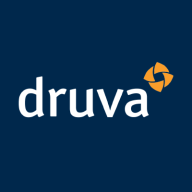

Druva inSync and NetApp Cloud Backup compete in data protection and management. Druva inSync has an advantage in pricing and support, while NetApp Cloud Backup offers superior feature sets.
Features: Druva inSync provides comprehensive data governance, compliance, and data recovery capabilities. NetApp Cloud Backup integrates with cloud platforms, offers robust data management, and supports flexible cloud environments.
Ease of Deployment and Customer Service: Druva inSync ensures seamless deployment with strong customer support, ideal for data protection across devices. NetApp Cloud Backup provides a more robust deployment model, fit for organizations with extensive cloud infrastructure investments.
Pricing and ROI: Druva inSync offers competitive setup costs aimed at maximizing ROI through efficient data protection. NetApp Cloud Backup might have higher setup costs but offers long-term ROI with expansive cloud data management features.


Druva inSync is a comprehensive data protection and governance platform that enables organizations to securely backup, recover, and manage their critical data.
With its cloud-native architecture, inSync offers scalable and efficient data protection across endpoints, cloud applications, and servers. It provides automated backups, ensuring that data is always protected and easily recoverable in case of any data loss or system failure.
In addition, inSync offers advanced data governance capabilities, allowing organizations to enforce data retention policies, monitor data usage, and comply with regulatory requirements.
With its intuitive user interface and robust security features, Druva inSync is the ideal solution for organizations looking to safeguard their data and ensure business continuity.
NetApp Cloud Backup is a fully integrated service for cloud backup and restoration. It was created to comply fully with NetApp's native data management software ONTAP, used for hybrid cloud experience. NetApp Cloud Backup is used to create backup and restoration for the protection and archiving of data, databases, and virtual machines related to the Cloud and On-Premises data in ONTAP. The way NetApp Cloud Backup works is by automatically creating block-level incremental backups. This ensures that the created backups are very fast and easy to restore. It is suitable for data protection regarding on-premises software as well as in the public cloud. NetApp Cloud Backup provides users with the ability to protect their cloud data at affordable prices and with a user-friendly interface so they don't need a lot of technical knowledge to be able to secure their cloud storage.
The copies created by NetApp Cloud Backup can be stored in the user's personal object storage in the cloud as well as on premises with StorageGRID - NetApp's storage platform. The backup copies can be restored to the original source or to a different source in Cloud Volumes ONTAP. NetApp Cloud Backup provides backups to AWS, Azure, and Google Cloud.
The features NetApp Cloud Backup provides include:
In addition to enhanced security and protection from malicious attacks, the advantages of using NetApp Cloud Backup include:
Abbasi P., a User at a financial services firm, likes that NetApp Cloud Backup is a completely agentless solution.
A Service Manager at a tech services company values its stability, scalability, and good technical support.
We monitor all Cloud Backup reviews to prevent fraudulent reviews and keep review quality high. We do not post reviews by company employees or direct competitors. We validate each review for authenticity via cross-reference with LinkedIn, and personal follow-up with the reviewer when necessary.